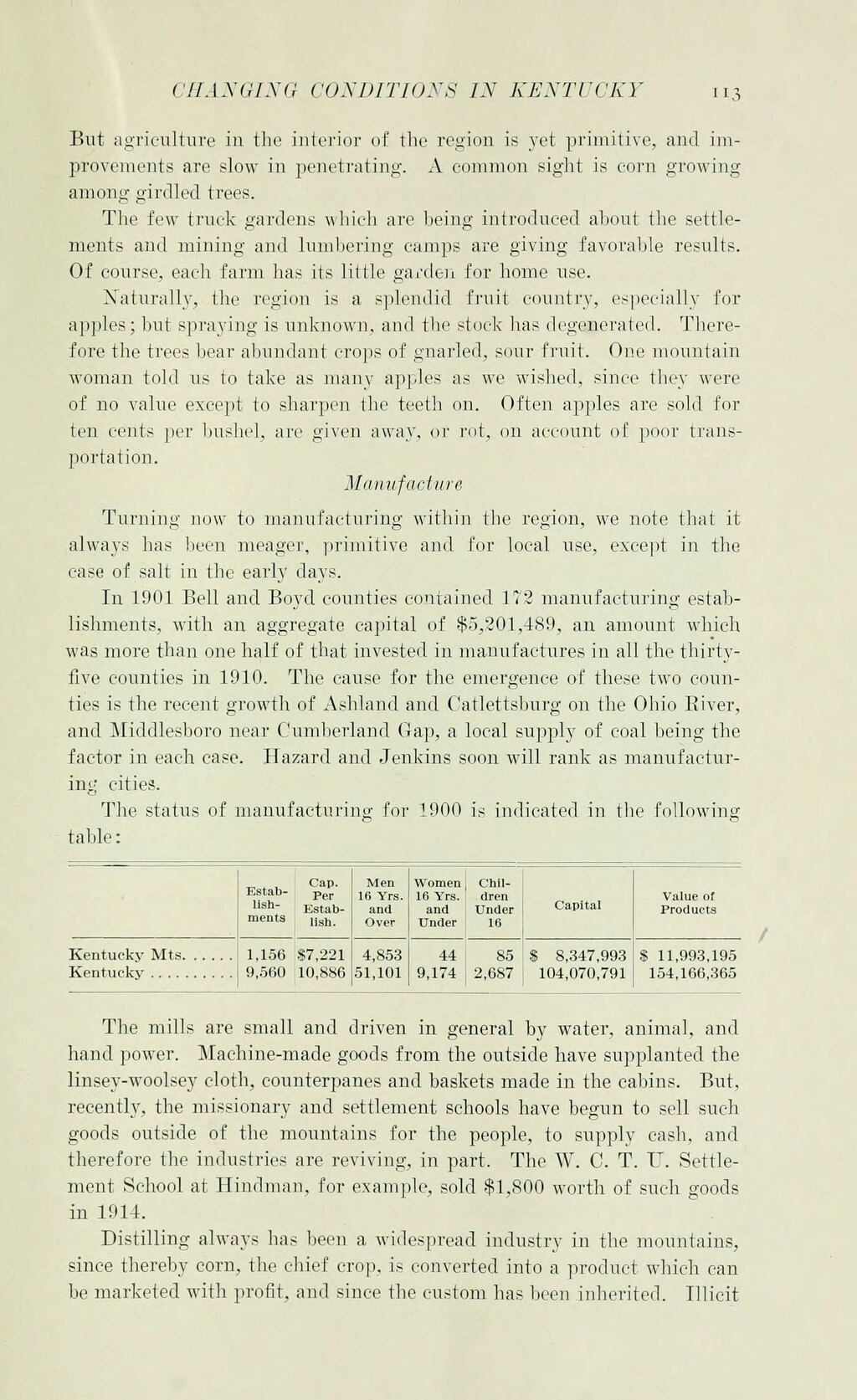But agriculture in the interior of the region is yet primitive, and improvements are slow in penetrating. A common sight is corn growing among girdled trees.
The few truck gardens which are being introduced about the settlements and mining and lumbering camps are giving favorable results. Of course, each farm has its little garden for home use.
Naturally, the region is a splendid fruit country, especially for apples; but spraying is unknown, and the stock has degenerated. Therefore the trees bear abundant crops of gnarled, sour fruit. One mountain woman told us to take as many apples as we wished, since they were of no value except to sharpen the teeth on. Often apples are sold for ten cents per bushel, are given away, or rot, on account of poor transportation.
Manufacture
Turning now to manufacturing within the region, we note that it always has been meager, primitive and for local use, except in the case of salt in the early days.
In 1901 Bell and Boyd counties contained 172 manufacturing establishments, with an aggregate capital of $5,201,489, an amount which was more than one half of that invested in manufactures in all the thirty-five counties in 1910. The cause for the emergence of these two counties is the recent growth of Ashland and Catlettsburg on the Ohio River, and Middlesboro near Cumberland Gap, a local supply of coal being the factor in each case. Hazard and Jenkins soon will rank as manufacturing cities.
The status of manufacturing for 1900 is indicated in the following table:
| Establishments | Cap. Per Establish. |
Men 16 Yrs. and Over |
Women 16 Yrs. and Under |
Children Under 16 |
Capital | Value of Products | |
| Kentucky Mts. | 1,156 | $7,221 | 4,853 | 44 | 85 | $ 8,347,993 | $11,993,195 |
| Kentucky | 9,560 | 10,886 | 51,101 | 9,174 | 2,687 | 104,070,791 | 154,166,365 |
The mills are small and driven in general by water, animal, and hand power. Machine-made goods from the outside have supplanted the linsey-woolsey cloth, counterpanes and baskets made in the cabins. But, recently, the missionary and settlement schools have begun to sell such goods outside of the mountains for the people, to supply cash, and therefore the industries are reviving, in part. The W. C. T. U. Settlement School at Hindman, for example, sold $1,800 worth of such goods in 1914.
Distilling always has been a widespread industry in the mountains, since thereby corn, the chief crop, is converted into a product which can be marketed with profit, and since the custom has been inherited. Illicit
